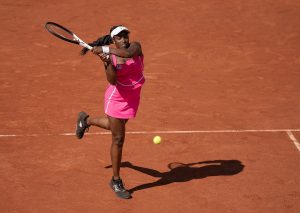When the weekly WTA rankings were released Monday morning, Japanese star Naomi Osaka found herself outside of the Top 10 for the first time since before her maiden Major title in September of 2018. Osaka rocketed up the rankings in 2018, coming from outside the Top 70 to reaching World #7 when she defeated Serena Williams to win the 2018 US Open. Her 2018 was excellent and saw strong Major performances, a title at Indian Wells, and the US Open title. Those performances came as a shock to some, with Indian Wells and the US Open the first two titles of Osaka’s career.
Osaka quickly proved she belonged at the top, winning the next Major at the Australian Open, securing world #1. Osaka’s rankings did fluctuate with her relatively poor performances on grass and cla,y but her hard court dominance kept her comfortably in the Top 10 for the last three years. A combination of a drop in form, limited play over the last two years, and her recent stepping away from the game due to her mental health eventually led to her falling down to world #12.
Why Did Naomi Osaka Drop Out?
Her 1,000 points from winning the 2019 China Open dropped off her total, and with her not playing last week, none of those were made up. Both the WTA and ATP points systems have been confusing with points carrying over from 2019 due to many tournaments being cancelled during the COVID-19 pandemic. This generally helped Osaka, as she held on to her points from a strong 2019 for longer than the standard 52-week period. The first reason her ranking began to slip was her lack of play in 2020. She entered just four tournaments throughout the entire year. Only two of those tournaments were played after the pandemic hit.
Osaka’s real struggles began in early 2021. After another US Open/Australian Open back-to-back that saw Osaka reach #2 in the world, she began to struggle as the season turned away from hard court. The cancellation of Indian Wells and a decent but not great showing in Miami did not give her momentum as the tour moved away from the surface where she has won all of her seven titles on. She lost two of her three matches at the WTA1000 events leading up to the French Open, which did not seem promising. Then she shocked the tennis world by withdrawing in the second round due to mental health concerns. While she has rightfully kept the exact issues private, she skipped the rest of the summer, including Wimbledon.
Osaka came back for the Olympics. She may have been rusty or forced herself back earlier than ready to play in front of home fans in Japan, but she has not been the same player since. She compiled just a 4-3 record on hard courts since returning, poor considering her standards. The record is more concerning considering she played just one match against a player inside the Top 40.
One of the largest reasons for Osaka’s drop is her light schedule, even before this summer. Osaka, like more modern tennis players focusing on longevity, plays a fairly limited schedule built around the big tournaments. With her dominant play, she had no problem keeping her ranking up. But when she began to struggle, she did not have many middle-ground events to prop her ranking up. Osaka will need to either change her schedule in the future or hope her form returns to get back to the top of women’s tennis.
Outlook for a Top 10 Return
While it is unlikely Osaka will increase her workload due to the strain that puts on player’s mental health, she can still reasonably make it back to the Top 10. Bolstered by her Australian Open title, she currently sits at #8 in the Porsche Race, which looks at only points earned in 2021. Osaka has earned points this year to be in the Top 10 but has said she plans on taking a break from tennis “for a while.” This does not bode well for her Top 10 chances anytime soon, but she has clearly shown she still has what it takes to get there. Tennis fans should expect her ranking to continue to fall if she sits out, though her Australian Open title alone should keep her inside the Top 30.
If Osaka is in a better place in 2022, she could quickly return to the Top 10. She would have to defend her Australian Open points, but has the “sunshine double” in March of Indian Wells and Miami with hardly any points to defend. Additionally, taking off this summer gives her almost nothing to defend the entire clay and grass court seasons next year. While she has historically struggled on both, any results will be beneficial to her ranking. Overall, it is impossible to predict where she is mentally. That will be her first priority–as it should be. If she does feel mentally fit next year, we should expect her back in the Top 10 before too long.
Main Photo from Getty.






